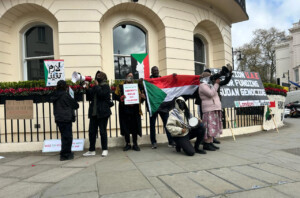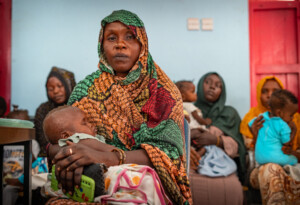Unicef urgently needs funds for vulnerable children in Sudan
The UN Children’s Fund (Unicef) urgently requires $22 million to provide lifesaving response for more than 100,000 children who “continue to bear the brunt of emergencies in Sudan”.
In a press statement today, Unicef Sudan reports that as of mid-June its Humanitarian Action for Children programme is funded for 33 percent only, including a mere 14 percent for assistance to the refugees in the country.
The financial deficit even more painful, as for the past few months the country is facing multiple emergencies with “the rapid spread of suspected cases of acute watery diarrhoea [..], a significant influx of South Sudanese refugees, and high rates of malnutrition, especially in the Jebel Marra area of Central Darfur”.
The UN Children’s Fund (Unicef) urgently requires $22 million to provide lifesaving response for more than 100,000 children who “continue to bear the brunt of emergencies in Sudan”.
In a press statement today, Unicef Sudan reports that as of mid-June its Humanitarian Action for Children programme is funded for 33 percent only, including a mere 14 percent for assistance to the refugees in the country.
The financial deficit even more painful, as for the past few months the country is facing multiple emergencies with “the rapid spread of suspected cases of acute watery diarrhoea [..], a significant influx of South Sudanese refugees, and high rates of malnutrition, especially in the Jebel Marra area of Central Darfur”.
Watery diarrhoea
In August last year, the first reports about cholera cases appeared in south-east Sudan. Though the disease began to spread rapidly through the country early this year and has infected more than 16,000 of people, the Sudanese government continues to deny that the disease is cholera, and speaks about an “acute watery diarrhoea (AWD)” epidemic. The disease has reached Darfur as well.
Unicef states that White Nile state in central Sudan is the most affected with more than 5,800 reported AWD cases. Almost 20 per cent of the affected population are children.
“The current number of weekly reported cases is similar to levels we had at the peak of the rainy season last year. In the White Nile state, with almost 100,000 refugees living mostly in camps, the situation could worsen as the rainy season begins. This is deeply worrying”, said Abdullah Fadil, Unicef Sudan Representative.
“The growing influx of refugees from South Sudan and more than 2.3 million displaced people increases the burden on the already stretched resources of host communities. Children continue to be the hardest hit.”
Refugees
More than 155,000 refugees from South Sudan have taken refuge in Sudan since the start of the year, including about 100,000 children. With the continued conflict in South Sudan and widespread food insecurity, Sudan expects to receive three times as many refugees in 2017 than what was expected at the beginning of the year, Unicef warns. The most affected states are East, South, and North Darfur, White Nile state, and South and West Kordofan.
“The growing influx of refugees from South Sudan and more than 2.3 million displaced people increases the burden on the already stretched resources of host communities. Children continue to be the hardest hit, and immediate and sustained support is crucial to provide them with timely and lifesaving humanitarian response, especially in the water, sanitation, health and nutrition sectors”, the Unicef Sudan Representative emphasised.
Jebel Marra
The UN children’s agency further points to the high levels of malnutrition, “with severe acute malnutrition levels at 5.4 percent” in the newly accessible Jebel Marra area in Central Darfur. “Immunization rates are also very low with children as old as seven years having never been vaccinated and an estimated 23,000 school aged children in need of education support.
“Unicef, in cooperation with state authorities and NGOs is currently on the ground, providing multi-sectoral nutrition, health, water, sanitation, hygiene promotion, and protection response through an ongoing “Find and Treat Campaign’ in the north, west and central Jebel Marra area.











 and then
and then